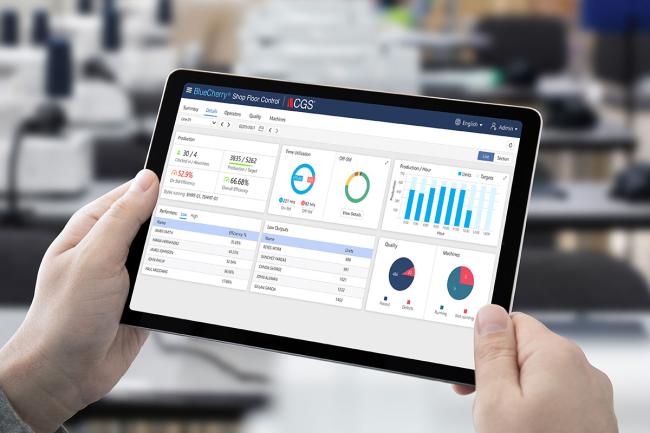3 Steps to Achieve Factory Floor Visability

There’s an immediate push to address supply chain disruptions instigated and perpetuated by the pandemic. But well before the disease outbreak, in fact for years now, manufacturers, brands and retailers have been under pressure to speed up their processes, find efficiencies and cut expenses, while improving their labor practices and lessening their environmental impact.
Unfortunately, many brands have been doing so in the dark.
Visibility into the shop floor—identifying bottlenecks, inefficiencies, waste and other areas in need of improvement—is key to achieving speed and expense reduction while maintaining quality. All that takes upfront planning, which in turn requires insights into the plant floor that are dependent on high-quality data.
Step 1 – A Prepared Workforce
To begin with, the shop floor needs a prepared workforce, well versed in using the necessary data tools. That’s easier said than done, given the strains in the labor market. Employee turnover impedes productivity, and the current labor shortage only makes that worse. The unemployment rate fell to 3.9 percent in December, according to the Jan. 7 report from the Bureau of Labor Statistics. Companies are wooing workers with higher wages and bonuses and, crucially, offering more job training, according to the Conference Board. Effective onboarding and training cuts costs, improves productivity and boosts the chances that employees will stick around, according to Sourcing Journal’s 2021 Visibility Report.
Providing workers with effective tools to carry out their jobs has also only grown in importance, and that begins with accurate and up-to-date information. That includes digitization of staffing, supplies and inventory data. Shop Floor Control (SFC) constitutes the software and other tools that can be employed to schedule and track orders, operations, resources, inventory and productivity. Effective use of these tools enables efficiencies, accountability and sustainability.
Step 2 – Data and Tools
Real-time data reveals bottlenecks that can be addressed immediately, as well as inform decisions in longer term workflow and materials planning, according to Daniel Binder, partner at Columbus Consulting. Well informed, updated teams are better able to respond and plan, and are less prone to human error, other experts told Sourcing Journal.
This enables a proactive approach – identifying and solving problems as they happen or even preventing problems – a far cry from the traditional reactive approach, the only approach possible when the best information is retroactive data and reports. More broadly, SFC tools enable teams to set goals. An incentives program provides another push – for employees to meet and even exceed their targets.
Step 3 – Sustainability and Best Practices
Supply chain transparency has also become critical for marketing and customer communications, as consumers increasingly choose brands demonstrating an ethos around environmental and social responsibility.
In the past five years, 85 percent of consumers have shifted toward sustainability concerns, with younger consumers more likely to have done so, according to a report from consultancy Simon Kucher & Partners. These issues encompass both labor issues and climate change plus other ecological concerns.
SFC tools allow manufacturers to identify any labor conditions or social situations that are out of compliance or, in the case of companies aiming to achieve goals beyond compliance, run afoul of their own standards. Similarly, SFC tools help manufacturers identify opportunities to reduce waste and replace legacy systems with greener options. Real-time data also makes shorter runs and on-demand production possible.
The heightened awareness around social and environmental impacts or even the desire to buy more sustainably sourced products doesn’t necessarily mean a willingness to pay a premium, however, Simon Kucher researchers also found. That makes finding efficiencies – with the help of up-to-date, easily accessible and easily shared information about what’s happening on the shop floor – all the more critical.
Looking for more transparency in your supply chain and processes? More insights and advice are available in our Visibility Report; download your copy today!

